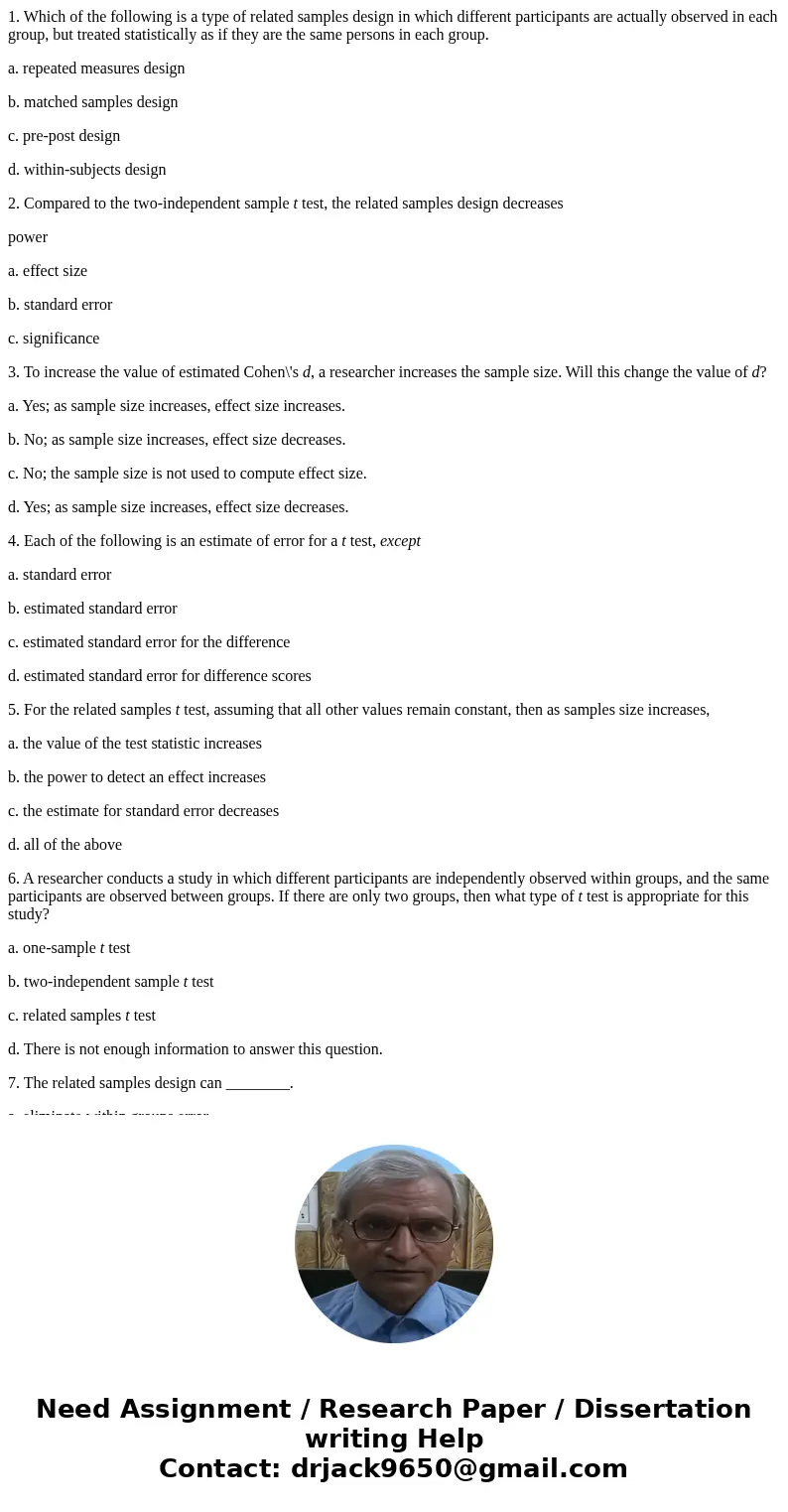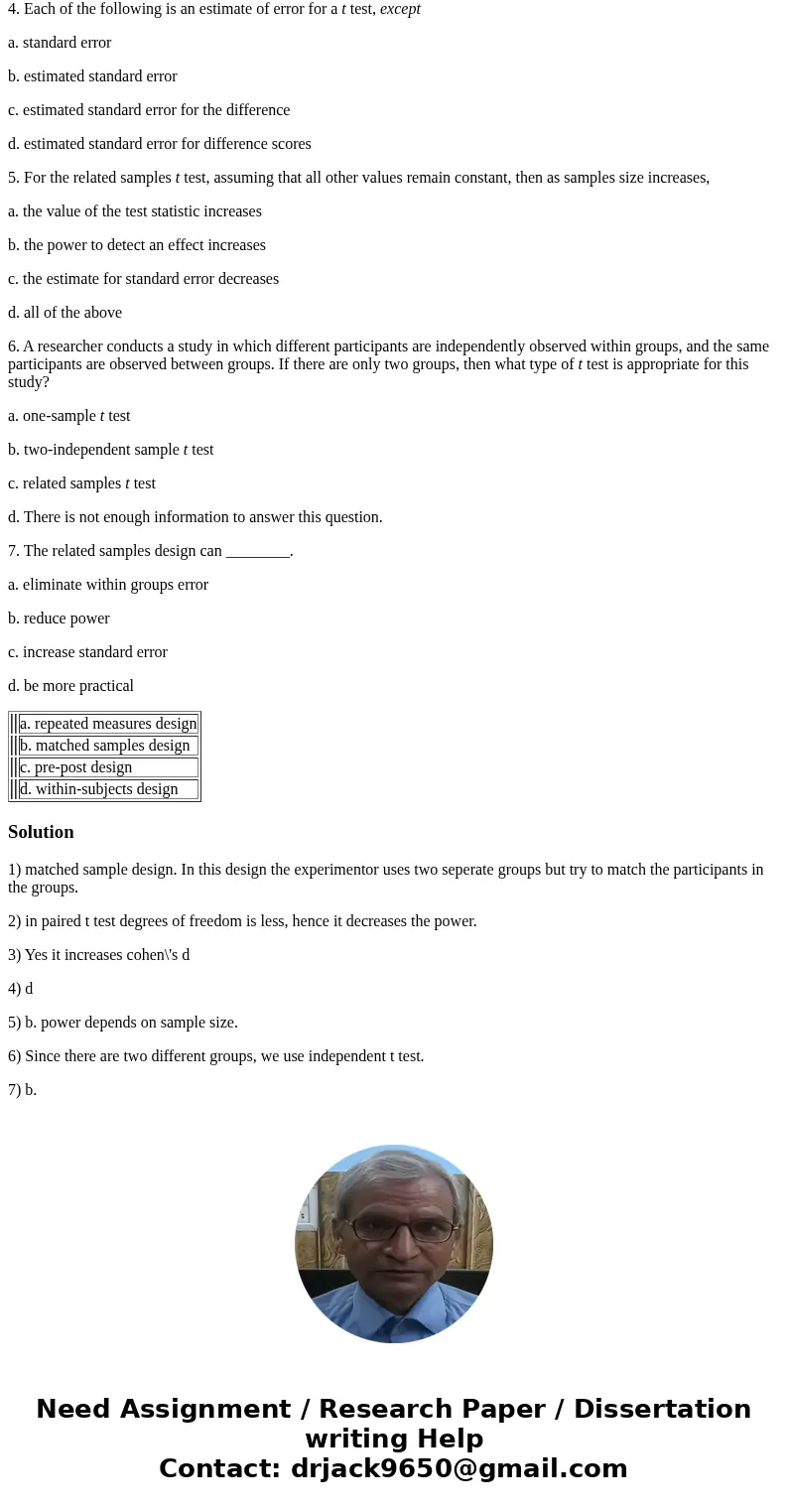1 Which of the following is a type of related samples design
1. Which of the following is a type of related samples design in which different participants are actually observed in each group, but treated statistically as if they are the same persons in each group.
a. repeated measures design
b. matched samples design
c. pre-post design
d. within-subjects design
2. Compared to the two-independent sample t test, the related samples design decreases
power
a. effect size
b. standard error
c. significance
3. To increase the value of estimated Cohen\'s d, a researcher increases the sample size. Will this change the value of d?
a. Yes; as sample size increases, effect size increases.
b. No; as sample size increases, effect size decreases.
c. No; the sample size is not used to compute effect size.
d. Yes; as sample size increases, effect size decreases.
4. Each of the following is an estimate of error for a t test, except
a. standard error
b. estimated standard error
c. estimated standard error for the difference
d. estimated standard error for difference scores
5. For the related samples t test, assuming that all other values remain constant, then as samples size increases,
a. the value of the test statistic increases
b. the power to detect an effect increases
c. the estimate for standard error decreases
d. all of the above
6. A researcher conducts a study in which different participants are independently observed within groups, and the same participants are observed between groups. If there are only two groups, then what type of t test is appropriate for this study?
a. one-sample t test
b. two-independent sample t test
c. related samples t test
d. There is not enough information to answer this question.
7. The related samples design can ________.
a. eliminate within groups error
b. reduce power
c. increase standard error
d. be more practical
| a. repeated measures design | ||
| b. matched samples design | ||
| c. pre-post design | ||
| d. within-subjects design |
Solution
1) matched sample design. In this design the experimentor uses two seperate groups but try to match the participants in the groups.
2) in paired t test degrees of freedom is less, hence it decreases the power.
3) Yes it increases cohen\'s d
4) d
5) b. power depends on sample size.
6) Since there are two different groups, we use independent t test.
7) b.


 Homework Sourse
Homework Sourse